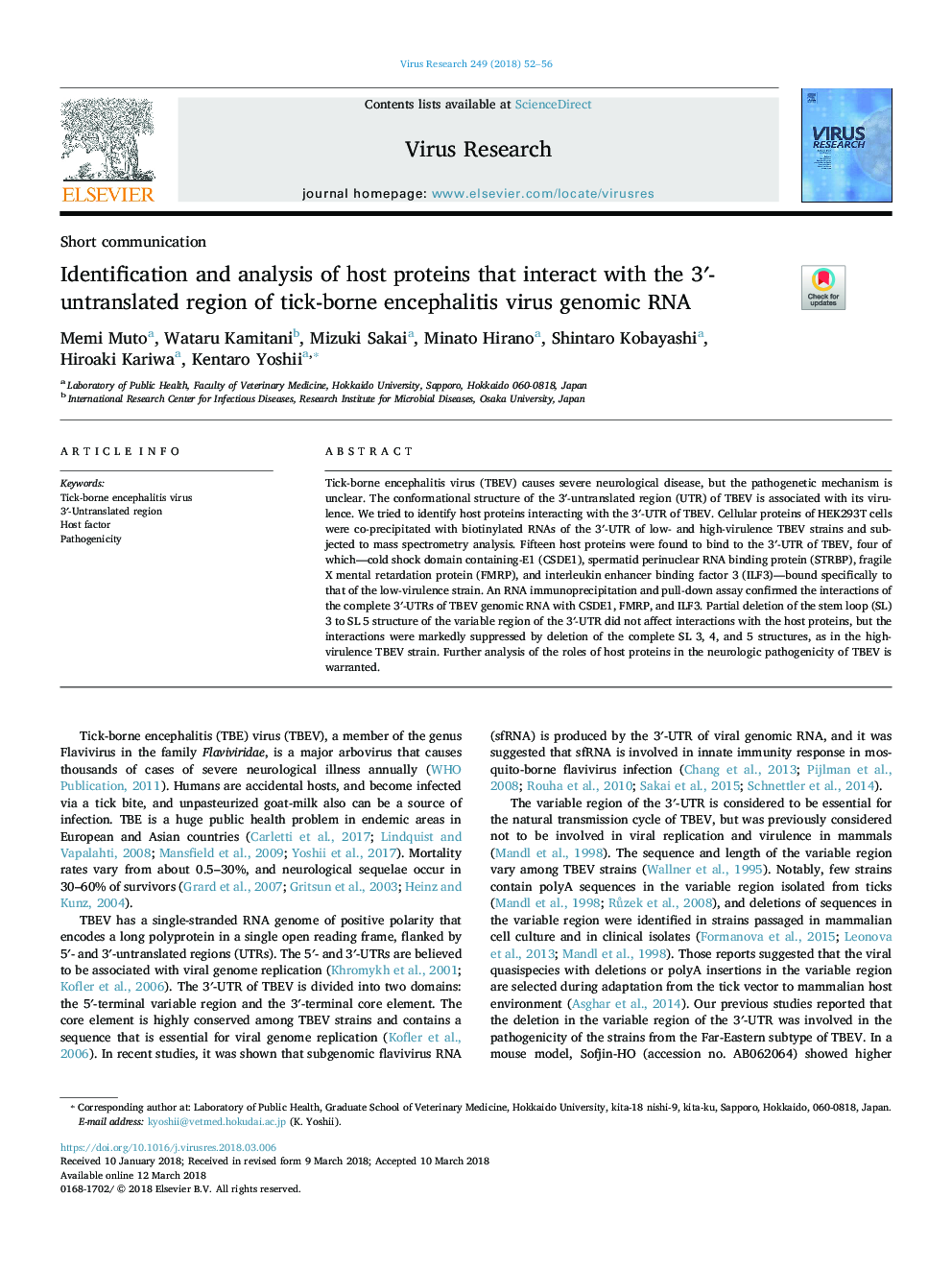| Article ID | Journal | Published Year | Pages | File Type |
|---|---|---|---|---|
| 8751823 | Virus Research | 2018 | 5 Pages |
Abstract
Tick-borne encephalitis virus (TBEV) causes severe neurological disease, but the pathogenetic mechanism is unclear. The conformational structure of the 3â²-untranslated region (UTR) of TBEV is associated with its virulence. We tried to identify host proteins interacting with the 3â²-UTR of TBEV. Cellular proteins of HEK293T cells were co-precipitated with biotinylated RNAs of the 3â²-UTR of low- and high-virulence TBEV strains and subjected to mass spectrometry analysis. Fifteen host proteins were found to bind to the 3â²-UTR of TBEV, four of which-cold shock domain containing-E1 (CSDE1), spermatid perinuclear RNA binding protein (STRBP), fragile X mental retardation protein (FMRP), and interleukin enhancer binding factor 3 (ILF3)-bound specifically to that of the low-virulence strain. An RNA immunoprecipitation and pull-down assay confirmed the interactions of the complete 3â²-UTRs of TBEV genomic RNA with CSDE1, FMRP, and ILF3. Partial deletion of the stem loop (SL) 3 to SL 5 structure of the variable region of the 3â²-UTR did not affect interactions with the host proteins, but the interactions were markedly suppressed by deletion of the complete SL 3, 4, and 5 structures, as in the high-virulence TBEV strain. Further analysis of the roles of host proteins in the neurologic pathogenicity of TBEV is warranted.
Related Topics
Life Sciences
Immunology and Microbiology
Virology
Authors
Memi Muto, Wataru Kamitani, Mizuki Sakai, Minato Hirano, Shintaro Kobayashi, Hiroaki Kariwa, Kentaro Yoshii,
